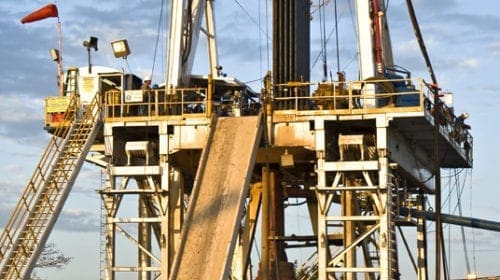The big news this week comes in the form of a new study conducted by IHS IHS -0.7% , documenting the huge positive impact that shale oil and natural gas – and Fracking, which makes the recovery of the resource possible – have had on the US economy and will continue to have into the future. Here are the major findings of the study, as reported in USA Today: Ironically, the results of the study were picked up by the Dallas Morning News, which just last week had praised the Dallas City Council for adopting a drilling ordinance that effectively prevents drilling for oil and natural gas inside its city limits. Thus, the city of Dallas, which receives about half of its electricity from power generated by gas-fired power plants, will enjoy the fruits of this boom while contributing nothing to it. In latching onto that free ride, Dallas joins places like New York and Vermont as provinces where leaders apparently think that electricity is created when you flip a switch and gasoline stations just happen to be located over underground pockets of naturally-occurring reservoirs containing various octanes and blends of gasolines.
The Morning News story goes on to detail some of the extended benefits that the Shale oil and gas boom is bringing to parts of Texas outside the Dallas city limits. But of course, cities like Corpus Christi, Bay City, and Bryan are places whose leaders clearly recognize that one of the best ways to benefit from an amazing industrial boom is to actually participate in it and contribute something other than print space to it. Go figure. The other piece of great economic news created by the US shale boom is that exports of tangible goods – led by huge volumes of refined petroleum products – have shrunk the 2nd quarter 2013 trade deficit to 2.7% of GDP, down from a 2005 peak of almost 6% of GDP. From January through June of this year, the US has averaged exporting 97.8 million barrels of crude and refined products to international markets, a dramatic increase from less than 50 million barrels per month as recently as 2007, thanks the discovery and ability to produce the massive new volumes of oil and condensate in shale plays around the country.
Without that final piece of good news, and the subsequent discovery of other massive new oil and gas shale plays around the country, October 2008 may well have turned out to have become the kickoff month of a second Great Depression. Because the numbers clearly show that the oil and natural gas industry, thanks to the much-vilified Fracking technique that has enabled the unlocking of this vast new resource, has been the main positive driver of the US economy for half a decade now.
The happy result of this rapid increase in the export of petroleum products and other tangible goods was that the Commerce Department was able to raise its 2nd quarter 2013 GDP growth estimate to 2.5%, up from the prior estimate of 1.7%. While still not a healthy enough rate of growth, five full years after the advent of the Great Recession in 2008, these facts inevitably lead to an understanding of just what a blessing the Shale Revolution has been for this nation’s economy.
States like New York and Vermont, and cities like Dallas and other localities around the country have fallen for the misinformation-filled siren song of the anti-fracking movement and made conscious decisions not to be active participants in the greatest economic story of our time. That’s their decision and their economic loss. It’s up to the rest of the country to carry the load and reap the rewards in their absence.
Oil and gas operations are commonly found in remote locations far from company headquarters. Now, it's possible to monitor pump operations, collate and analyze seismic data, and track employees around the world from almost anywhere. Whether employees are in the office or in the field, the internet and related applications enable a greater multidirectional flow of information – and control – than ever before.












